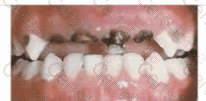You are on duty in the Emergency Department when 5 patients are brought in by ambulance after a high-speed motor vehicle collision. Which one of the following patients requires the most urgent medical care?
An 18-year-old woman presents to the Emergency Department with a 3-day history of vomiting and right upper quadrant pain. She is alert but appears unwell and jaundiced. She was previously healthy and has not travelled recently. She has no risk factors for blood-borne pathogens. She denies hematemesis or hematochezia. On further history, she reports that she took a full bottle of pills that she found in her parents’ medicine cabinet several hours before she started vomiting. Without intervention, which one of the following is the most likely outcome?
A 71-year-old man with stable chronic low back pain on hydromorphone (8 mg twice daily) presents upset, requesting an early refill. He reports his granddaughter has been stealing his medication and pressuring him for refills. Which one of the following is the best next step?
There are many expenses which are considered part of providing care to patients. Under Canadian legislation, which one of the following is an acceptable means of covering these costs?
A 58-year-old woman presents to your office with refractory bipolar I disorder. She is on the following medications: lithium carbonate, valproic acid, and olanzapine. She also takes acetaminophen for osteoarthritis and pantoprazole for gastroesophageal reflux. Lately, she has noticed she bruises very easily. Laboratory work displays a platelet count of 70 × 10⁹/L (normal 130–400). Which one of the following is most likely to induce this side effect?
An otherwise well 18-month-old girl is brought to your family practice office for routine immunization. Her mouth is as shown in the attached image. She has no symptoms. Which one of the following is the most likely cause of this presentation?

Image description: Severe black and brown decay of multiple upper front teeth, with relatively spared lower teeth.
A 56-year-old woman presents to your office with a 9-month history of intolerable sweating, palpitations, and periodic anxiety. Her last period was 12 months ago. She continues to have regular Papanicolaou testing with no worrisome pathology. She is otherwise healthy. Which one of the following is the most effective treatment for these symptoms?
A 38-year-old marathon runner presents to your office with a 6-month history of increasing right hip pain. The pain is worse with acclivity and has prevented him from running for the last 4 months. He denies fever or chills. His wife adds that she is concerned because he is increasingly disengaged with the family and not interested in other activities he usually enjoys, including sex. Which one of the following is the best next step in management?
The parents of a 12-year-old boy present to your clinic to discuss their son’s submersion injury. The patient was seen in hospital for 6 months after being pulled unresponsive from a lake at his friend’s house; he had been submerged for an estimated 20 minutes. After extended resuscitation and a 2-month stay in the intensive care unit, he remains in a persistent vegetative state but needs no respiratory or cardiac support. When evaluating the discharge from hospital, which one of the following is most appropriate?